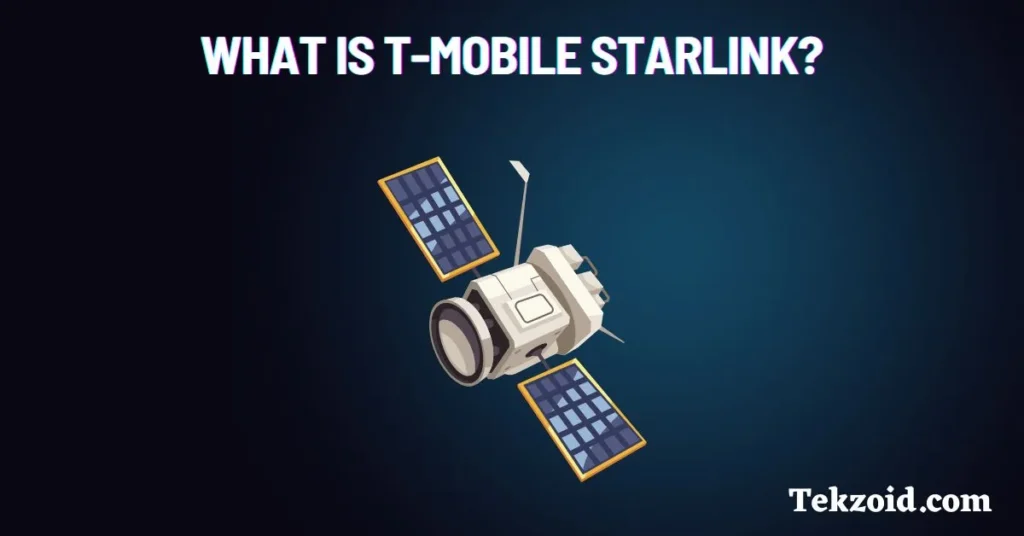T-Mobile and Starlink officially launched T-Satellite on July 23, 2025—a satellite-to-phone service that lets users send texts and share locations even without any cellular signal. Internet and app access are coming soon.
A few weeks ago, I found myself stuck with a weak internet connection during a short trip to a remote area. I couldn’t stream videos, couldn’t join a video call, and even sending messages was a struggle.
That’s when I started reading more about T-Mobile’s partnership with Starlink, and honestly, it caught my attention.
If you’re someone like me who works online, loves gaming, or just enjoys a good Netflix session without buffering, having a reliable internet connection matters. And that’s exactly what T-Mobile and Starlink are trying to fix. And while Starlink helps in remote areas, US Mobile’s Dark Star is a good option for a strong signal in cities and suburbs.
Table of Contents
What is T-Mobile Starlink?

T-Mobile Starlink, now branded as T-Satellite, is a satellite-powered mobile service by T-Mobile and SpaceX’s Starlink.
It currently enables SMS texting and location sharing directly via satellite in areas with zero cell coverage—no app, SIM, or new phone needed. Voice calls, media messaging, and internet access are expected in upcoming phases.
How does T-Mobile Starlink work?
It sounds complicated, but it’s actually pretty simple:
- Starlink uses satellites: SpaceX launched a bunch of satellites that orbit close to Earth. These satellites send internet signals down to receivers on the ground.
- T-Mobile uses those signals: T-Mobile combines its mobile network with Starlink’s satellite tech. This way, users can stay connected even in spots where cell towers can’t reach.
- You stay connected: As long as you have a supported device and are within T-Mobile’s extended coverage, you can enjoy the service.
I think this is especially useful for digital nomads, people living off-grid, or families who move around a lot.
Why does it matter?
While full-speed satellite internet isn’t yet available for phones, satellite texting helps users stay connected during emergencies or when completely out of network range. It’s a small but crucial step toward full satellite connectivity.
Some of the biggest benefits:
- T-Mobile’s satellite texting already works in remote areas like mountains and forests, and future phases may bring voice and internet access.
- Future speed potential: Once full satellite data access is available, users may be able to stream, work remotely, and game from remote locations—but for now, only satellite texting is supported.
- Works for remote jobs: While internet access isn’t live yet, satellite texting can help remote workers stay connected in emergencies or when regular signals drop.
I’ve noticed a growing number of people asking about reliable internet for travel trailers and remote work setups. This could be one of the more affordable and accessible options available.
Update (August 2025): T-Satellite is now live. You can send and receive texts, share your location, and—on some Android phones—even send photos. Starting October 1, limited app support (WhatsApp, Maps, AccuWeather) will also roll out via satellite at reduced speeds.
Which Phones Support T-Satellite?
Over 60 phone models are already compatible, including newer iPhones (13 and above), Samsung Galaxy, Google Pixel, and Motorola devices.
✅ No extra app, SIM, or hardware is needed—if your phone supports it, it just works.
❗ MMS (photos and voice clips) currently works best on Android. iPhone MMS support is expected in a later update.
T-Satellite Pricing:
T-Satellite is free for users on T-Mobile’s Go5G Next and Experience Beyond plans. If you’re on a different plan—or even on another carrier—you can still access it for $10/month, although this price may increase in the future.
🔔 If you’re not on one of the supported plans, you can still access it for $10/month. T-Mobile has confirmed this will increase to $15/month later in 2025, so early adopters benefit from a discount.
Who can use it?
If you’re on a T-Mobile phone plan, whether it’s prepaid or postpaid , you’re eligible. Families with group plans can also benefit. It’s designed to be simple and flexible.
What’s Coming October 1?
T-Satellite will begin supporting basic data access for select apps via satellite. These include:
- Apple Maps / Google Maps
- AccuWeather
- AllTrails and other travel/emergency apps
These apps will work at limited speeds, and functionality will vary depending on satellite conditions and device support.
Also, 911 text support and emergency alerts will work even in areas with no cellular service.
Final thoughts from Tekzoid
This isn’t a pitch. It’s just me sharing something that actually feels useful.
T-Mobile Starlink might not be for everyone. If you live in a city with great Wi-Fi, you probably won’t notice the difference. But if you’ve struggled with poor coverage before, like I did during my trip, this could be a real fix.
I’d suggest keeping an eye on the rollout in your area. It’s still expanding, but the direction it’s headed looks promising.
Got any questions or want to share your experience with satellite internet? Drop a comment; I’d love to hear from real users like you.
Related Faqs
Who can use T-Mobile Starlink?
Any T-Mobile customer, whether on a prepaid or postpaid plan, can access the service once it’s available in their area.
Can I use T-Mobile Starlink while traveling?
Yes, the service is ideal for travelers visiting areas with limited or no cellular coverage.